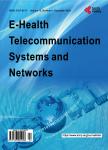The Impact of Computerized Health Information System on Medical &Administrative Decisions, Sana’a Hospitals, Yemen (2017-2020)
The Impact of Computerized Health Information System on Medical &Administrative Decisions, Sana’a Hospitals, Yemen (2017-2020)作者机构:Health Office-Al-Mahwit Ministry of Public Health and Population Al-Mahweet Yemen Omdurman University Omdurman Sudan Yemen Field Epidemiology Training Program Ministry of Public Health and Population Sanna’a Yemen
出 版 物:《E-Health Telecommunication Systems and Networks》 (远程医疗系统和网络(英文))
年 卷 期:2022年第11卷第2期
页 面:47-66页
学科分类:08[工学] 0812[工学-计算机科学与技术(可授工学、理学学位)]
主 题:Health Information Systems Decision-Making Hospital Yemen
摘 要:Background: Health information systems (HIS) play a major role in decision-making. The aim is to identify the components of computerized HIS and their relationship to administrative decisions at the main referral hospitals for Sana’a city. Method: This applied research is a descriptive, cross-sectional study in which the HIS of 7 hospitals affiliated with Sana’a city hospitals during “2017-2020, was evaluated based on Self-administered questionnaires. Data were collected by using Self-administered questionnaires and analyzed in SPSS 16 by using descriptive statistics. Results: A total of 626 users (95.7%) had responded. 73%, 75%, 69%, 70%, 71% of users mentioned that resources were available, for physical, software, human, organizational, and decision computerized HIS, respectively. The study showed a strong relationship between computerized information systems with their physical, software, human and organizational components, and medical and administrative decisions. While the study showed the absence of a relationship between demographic factors and computerized information systems with their hardware, software, human and organizational components, medical and administrative decisions, except for gender with organizational components, age, qualification with hardware and software components, and years of experience with all study variables. Conclusion: The application of HIS at hospitals in decision-making has several challenges, including the lack of updating of hardware and software components Furthermore, the absence of specific, focusing on developing their technical staffs, and mobilizing financial resources to achieve implementation properly. Therefore, establishing the technical management with clear roles and tasks with multi-disciplinary, and increasing the support of the administrative leadership in the process of implementing HIS are recommended.



